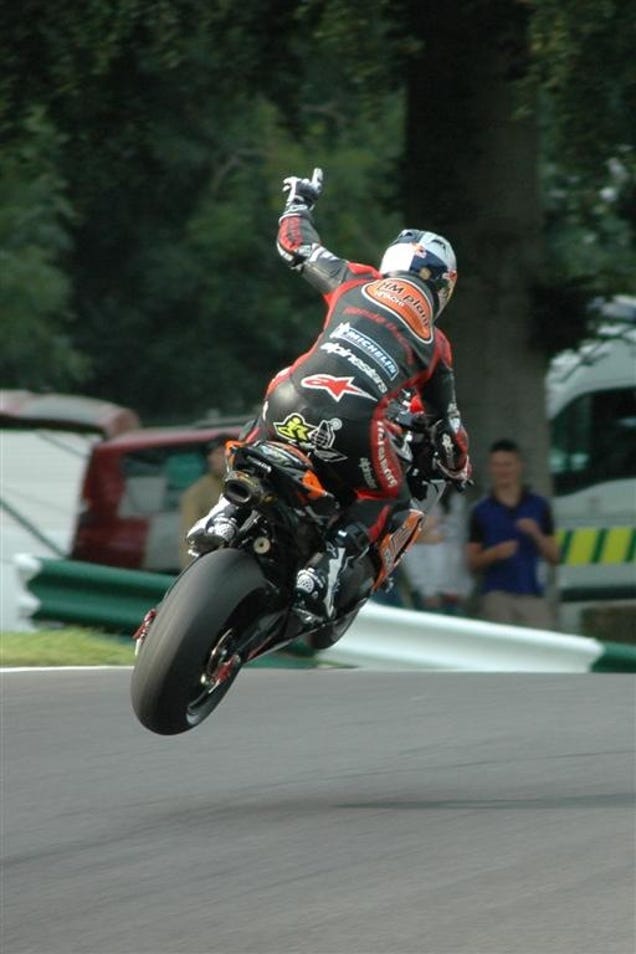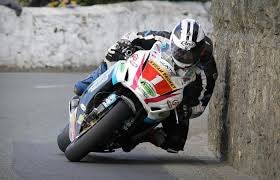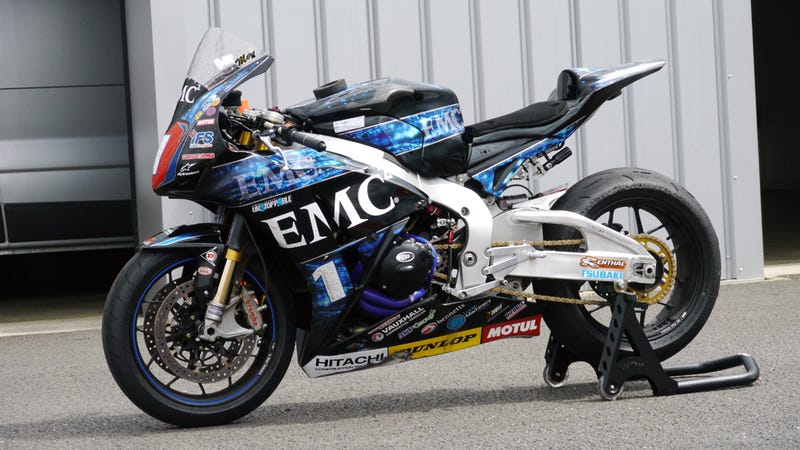In the early 20th century motorcycle and automotive racing was carried out on public roads. Courses would be linked together using the most interesting roads, both for spectators as well as to be the most challenging for the riders. Roadways designed for utility purposes and slow speeds would often have features such as bumps and curves that would present real difficulty when negotiated at much higher speeds. Road courses would also be fairly long, in some cases, tens of miles long. Long courses could have over a hundred individual turns so memorizing the course past a certain extent wasn’t possible. So you would have to develop a skill set to handle both irregularities as well as not-too-familiar corners. A certain sort of rider emerges that becomes the best at doing this sort of racing.
Public safety concerns prompted racing organizers to build closed courses to be used for racing only. Many fatalities involving both spectators as well as the racers themselves were mounting. And the bikes themselves were only getting faster as the pace of technological development was quite fast. The average racing speeds at such venues might have been in the mid 40MPH range in those days. Today’s superbikes will go 100MPH in first gear...
Despite safety concerns, you can imagine that those that were successful at this kind of racing would not necessarily be too thrilled for the game to be changed. But change proceeded nevertheless and modern road racing of today takes place mainly on short, purpose built tracks that have incorporated all sorts of safety features. The fatality rate even at the highest levels of competition is very low, indeed, as a result.
The Isle of Man TT is one of but a very few surviving examples of the early days of motorcycle racing. Racing down narrow country lanes at extremely high speed, riders that do well here possess a somewhat different skill set than GP racers. Most of today’s GP stars would probably like to take a crack at the TT but are either contractually not allowed to do so or just maybe don’t want to take the chance. It really is a completely different sort of riding altogether. So, one may ask, just what is the difference?
First, let’s describe all of the differences in the track and how the construction of it itself changes the skills necessary to navigate it. Tracks are designed with many safety features these days, the most obvious and effective are the overall smoothness of the surface combined with the runoff areas on the outsides of turns. This smoothness allows maximum contact with the tires at all times. Even small ripples that do not lift the bike off the pavement reduce the effective traction by reducing the force which is pressing the tire to the track, initiating slides. Tracks are graded and tamped during the construction process to eliminate even the slightest waves in the pavement. When a rider does exceed traction and loses control, long runoff areas and gravel traps will prevent him from getting hurt,for the most part. Soft wall barriers are also effective at reducing injuries. A less obvious difference between street courses and speedways has to do with ‘through the turn’ visibility. Turns are free of visual obstructions such that the corners are not ‘blind’. It should also be mentioned that track design has evolved its safety features to this day and have eliminated even previously deemed safe features. Thus, older tracks like Spa Francorchamps’ Eau Rouge and Raidillon complex would not be allowed to be built today due to safety concerns.
So what about the riding component? The biggest difference from the rider’s perspective would be the idea that crashing on a GP track may give you close to 100% odds of survival and crashing at the TT, close to the opposite. Despite the perceived abandon that TT champions ride with, it’s not entirely what it seems. They must overbrake corners to some degree as well as not committing to the extreme lean angles often seen in GP racing. ‘Drag racing’ from corner to corner, in some relative sense, allows the rider to make time while not over committing to turns. You cannot win on a GP track with this approach. All the points on the GP track must be fully committed to in order to do well. Bumps and jumps may be attacked full throttle, only when they are part of a straight section of track. The ‘Bottom of Barregarrow’ section of the Isle of Man TT has a dip mid corner and is a good example of where you really need to relax a bit. In addition, a good TT rider needs to learn how to ride ‘just out of the saddle’, so to speak, like an off road rider in order to keep the bike underneath him in difficult bump/jump complexes.
Of course, the bikes themselves have some distinctions as well. The smooth surface of the GP track allows engineers to design maximally low motorcycles. As the rider is never riding ‘just out of the saddle’ as his TT counterpart, windscreens can be quite low and thus aerodynamic and the seat/tank/handlebar/footpeg arrangement can be quite compact. The opposite goes for the TT bike. High windscreens, taller, flatter seating arrangements are necessary. Some appear to be running longer suspension travel. Despite running nearly as much horsepower as the GP bikes, the top speed of the TT bike is a bit lower as the bike is less aerodynamically perfect.
It is said that there is not much money to be won racing at the Isle of Man. That there is still the kind of interest and commitment to it that there is shows another difference to Grand Prix racing. While GP racers take many chances and push limits to the maximum extent every time they race, they are paid handsomely for it. Serious TT riders, by comparison, are motivated entirely by pride, glory and tradition. In today’s consumerized, marginal dollar oriented world, it is rare indeed to see this kind of display. And that may be the biggest difference and the reason why the ‘TT’ is still the most intriguing motorcycle race in the world.
Written by John Camara of ExpressMoto Design






Aucun commentaire:
Enregistrer un commentaire